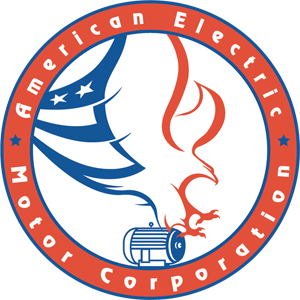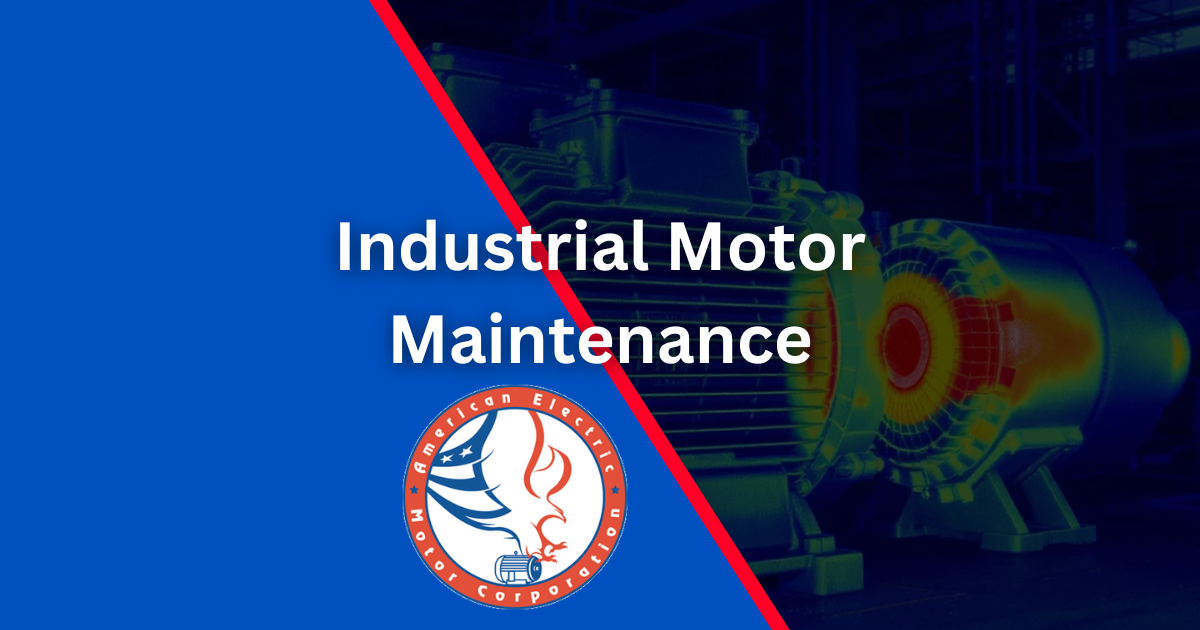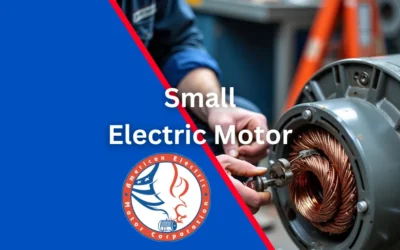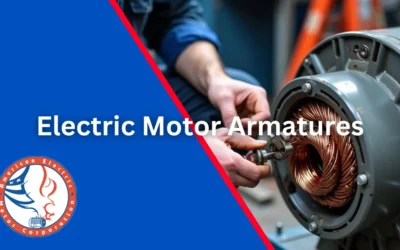5 Steps to Eliminate Downtime
Unscheduled downtime. For a plant manager, those are the two most expensive words in the English language. When a critical electric motor fails, the consequences ripple across the entire operation. Production grinds to a halt, deadlines are missed, and costs spiral out of control. The pressure to get the line moving again is immense, but the reactive, fire-fighting approach to maintenance is a cycle of inefficiency that slowly bleeds profits.
What if you could trade that chaos for control? What if you could anticipate failures, extend the lifespan of your critical equipment, and transform your maintenance strategy from a cost center into a competitive advantage?
For over 50 years, American Electric Motors has been on the front lines, helping industrial clients move from reactive repairs to proactive reliability. We’ve seen firsthand how a strategic approach to motor maintenance can eliminate the catastrophic costs of failure. This guide is the culmination of that experience—a five-step framework designed to put you back in control of your operations.
The True Cost of a Failed Motor: It’s More Than Just the Repair Bill
Before we dive into the solution, it’s crucial to understand the problem. The cost of a failed motor isn’t just the invoice from the repair shop. The real financial damage includes:
- Lost Production: Every minute the line is down, you’re losing output and revenue.
- Labor Costs: Your team is idle, yet the payroll clock is still running. Overtime pay for emergency repairs further inflates this cost.
- Collateral Damage: A sudden motor seizure can damage connected equipment, turning one problem into several.
- Reputational Harm: Missed deadlines and delayed shipments can damage the trust you’ve built with your customers.
This is the pain that keeps plant managers up at night. But by implementing a structured maintenance plan, you can protect your facility from these cascading consequences.
Step 1: The Foundation of Reliability – The Daily Walk-Around
The most effective maintenance strategies start with the simplest actions. A consistent, detail-oriented daily inspection by your operators or maintenance staff is the first line of defense against catastrophic failure. It costs very little to implement and can catch over 80% of potential issues before they escalate.
Train your team to use their senses to identify early warning signs. This isn’t just a casual stroll; it’s a focused diagnostic routine.
- Listen for Trouble: Motors should have a consistent, smooth hum. Be alert for any changes, such as grinding, whining, or rattling. These sounds often indicate bearing wear, misalignment, or loose components.
- Look for Clues: Visually inspect the motor and its surroundings. Are there signs of overheating, like discolored paint or melted plastic? Are mounting bolts secure? Is there excessive dust or debris clogging the cooling fins, which can lead to overheating? Check for leaking oil or grease around the seals.
- Feel for Heat and Vibration: While exercising extreme caution, feel the motor housing. It will be warm, but if it’s too hot to touch comfortably, it’s a clear sign of a problem, such as an overloaded circuit or failing bearings. Excessive vibration can point to misalignment or an unbalanced load.
- Smell for Problems: The smell of burning insulation is a telltale sign of an electrical issue within the windings. This requires immediate attention to prevent a complete burnout.
Step 2: Advanced Diagnostics – Seeing the Invisible Threat
While daily inspections are foundational, some problems develop deep within a motor’s mechanics. This is where advanced diagnostics come into play, allowing you to move from preventive to predictive maintenance.
- Vibration Analysis: This is the gold standard for predicting mechanical failures. Every rotating piece of equipment has a unique vibration signature. By taking regular readings, you can establish a baseline. The moment that signature changes, even slightly, it indicates a developing issue like bearing wear, imbalance, or shaft misalignment long before it becomes critical. This allows you to schedule a repair during planned downtime, not in the middle of a production run.
- Thermal Imaging (Infrared Thermography): Heat is a primary byproduct of electrical and mechanical inefficiency. An infrared camera can instantly reveal “hot spots” in motors, connections, and control cabinets that are invisible to the naked eye. These hot spots are early indicators of overloaded circuits, poor connections, or internal friction, giving you a clear roadmap of where to focus your maintenance efforts.
Step 3: The Critical Decision – The Repair vs. Replace Dilemma
When a motor begins to fail, you face a critical decision: repair or replace? Making the right choice requires a clear-headed analysis, not a panicked reaction. A new motor isn’t always the best answer, and a poorly-executed repair can be a waste of money.
Use this data-backed framework to guide your decision:
- Cost Analysis: Compare the price of a new, comparable motor to the quoted cost of a full repair and reconditioning. A high-quality rewind from a reputable shop is often 50-70% of the cost of a new motor.
- Lead Time and Availability: How quickly can you get a new motor? Supply chain issues can mean weeks or even months of waiting. In contrast, American Electric Motors can often turn around a complex repair in a matter of days, providing the fastest path back to full production.
- Motor Age and Efficiency: Is the failing motor an older, less efficient model? If so, replacing it with a new, energy-efficient model could offer long-term savings on electricity costs that offset the higher initial price.
- Customization and Footprint: Is the motor part of a specialized application or have a unique mounting footprint? A direct replacement may be hard to find. Repairing and rewinding the original motor ensures it will fit perfectly back into your system without costly modifications.
Step 4: The Power of a Professional Rewind – Restoring and Enhancing Performance
When a repair is the right path, a professional armature rewind is one of the most effective services you can invest in. This isn’t a patch-up job; it’s a comprehensive re-manufacturing process that brings a motor back to, and often beyond, its original factory specifications.
At American Electric Motors, our rewound armature services involve a meticulous process:
- Complete Disassembly and Diagnosis: We carefully dismantle the motor, steam clean every component, and perform rigorous tests to identify the exact cause of failure.
- Precision Stripping and Winding: The old, damaged windings are expertly removed. Our technicians then use high-quality copper and advanced insulation materials to rewind the armature, customized to your exact voltage and performance requirements.
- Machining and Balancing: We use our in-house machine shop to repair or remanufacture any worn mechanical parts, such as the shaft or end bells. The entire rotating assembly is then dynamically balanced to eliminate vibration and extend bearing life.
- Rigorous Testing: After reassembly, the motor undergoes a comprehensive series of tests to ensure it meets or exceeds OEM standards for performance and reliability.
The result is a motor that performs like new, backed by a one-year service warranty, for a fraction of the cost of a replacement.
Step 5: The Ultimate Solution – Partnering with an Expert Guide
You don’t have to navigate the complexities of motor maintenance alone. The most successful and efficient industrial operations understand the value of a strategic partnership. They don’t just look for a repair shop; they look for a guide—an expert who can help them build a reliable, cost-effective maintenance program.
At American Electric Motors, we position ourselves as that guide. With a combined experience of hundreds of years, our technicians have seen it all. We are a full-service facility, offering everything from new and refurbished motor sales to state-of-the-art diagnostics and emergency repairs. As an authorized DEMAG repair facility, we have the specialized expertise to handle even the most demanding applications, like overhead cranes and hoists.
From Fire-Fighting to Forward-Thinking
Eliminating downtime requires a strategic shift—from reacting to problems to proactively preventing them. By implementing this five-step framework, you can take control of your maintenance, improve your facility’s reliability, and protect your bottom line.
Start with daily inspections, layer in advanced diagnostics, make informed repair-or-replace decisions, and trust the power of a professional rewind. Most importantly, partner with an expert who can guide you on the path to operational excellence.
Ready to take the first step?




